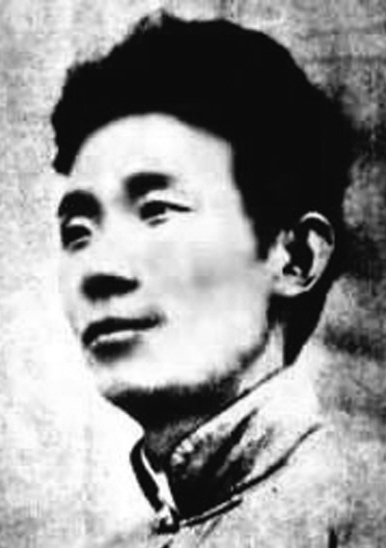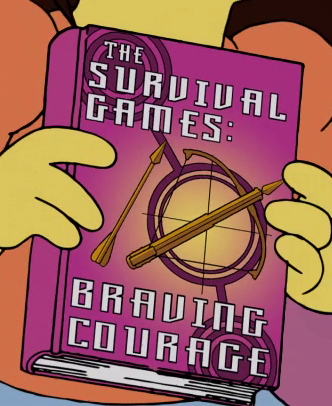(Note: I am deeply, deepl sorry for this post, and nowadays very ashamed of it. I have become to realize how stigmatizing it is, even if I did not mean it. I would delete it, but decided to just have this note. I am sorry, and I have just recently began to understand my privilege as a able-bodied person with who does not struggle with mental health. I realize I was being insensitive and I apologize).
Mental illness and madness has been a theme that has continually been fascinating, and so incessantly present, in all forms of fiction. This allure can be no surprise as we cannot help but be enthralled by the abnormal and of things that are rare, yet familiar. Insanity is a permutation on the surface of human psyche which is seen as uncommon, yet is continually lurking on the edge of all mental existence. Throughout cinema history, many excellent films have featured “crazy” people, and some of most memorable characters to be created have happened to be female. These “crazy” women characters have come in many different forms: some are complex, some are pure evil, and some are tragic and misunderstood. In this post I will talk about some of the most insane ladies cinema has offered us.
The film “A Streetcar Named Desire” (1951), an adaption of Tennessee William’s play with the same title, stars Vivien Leigh as the “southern bell” Blanche. Blanche is a disturbed young woman who, after being fired from her job as a teacher, is forced, due to monetary problems, to move in with her sister, Stella, and Stella’s abusive husband, Stanley. Blanche has a tormented and shadowy past. It is due to the inescapable and haunting memories of the past that she is driven to the darkest depths of psychic fever and delusion. Blanche dreams of a life filled with luxury for her and her sister, and it is the fact that Stella has married a working man which propels and fosters Blanche’s growing disgust for Stanley and the working class in general. Blanche’s relationship with Stanley becomes more and more twisted and hostile and in the end Blanche totally loses touch with reality.

Leigh captures perfectly the insanity and tragedy of Blanche’s character. Whenever Blanche starts one of her non-sense, uncanny ramblings, Leigh widens her eyes and gives the other characters around her a scary, angry, and lastly, uncontrollable look. She also is able to play Blanche’s flirtatious side perfectly, showing a softer, but still extremely creepy, side in Blanche. It is debated among critics and fans of the film (and play) why Blanche has gone mad. The film implies that her husband’s suicide, along with mistreatment from other men in her life, which may be the cause. It is also implied that Blanche expected too much from life, and the reality of her true class and lifestyle drove her over the edge. Or that she snapped after being fired from her teaching job. “A Streetcar Named Desire” is also known for its critique on the passive roles of women in society, which Blanche is a victim of. Whatever the reason is behind her insanity, Blanche is a scary crazy lady that is unforgettable, just like the stunning classic movie she is leads in.
Bette Davis was well-known for often playing roles of unflattering women characters. A good example of such a role is when she took the lead role for the thriller called “What Ever Happened to Baby Jane?” (1962). In “Baby Jane” Davis plays an aging, alcoholic ex-child star, Jane, who can’t accept that her carrier in the Hollywood Machine is come and gone. Jane lives with, and incessantly plies at and torments her sister, Blanche (Joan Crawford), who was a successful (more flourishing than Jane) actor, but had to quit her career after a driving accident crippled her permanently and put her in the clutches of Jane’s “care”. Jane and Blanche had always had a divisive and dreadful relationship which a prime cause of the tension being the favoring of Jane by the girl’s father which, ultimately leads to a psychopathic jealously in Blanche towards her sister. While Blanche became a star Jane sank into obscurity and became the forgotten actress to Blanche’s monumental career. Jane spiraled further and further into the depths of bitterness and obsessive hatred. When the story of the movie takes place we see Jane’s sister is totally dependent on her, after the accident, and Jane uses and abuses this power to an extreme. One of the most famous and ghastly scenes from the film is when Jane first secretly kills Blanche’s beloved pet and then serves the pet to her a day later for lunch.
“Whatever Happened to Baby Jane?” focuses on the two sister’s relationship where envy and bitterness has grown through the mechanisms of family and career and now has become a matter of life and death. Bette Davis is horrifying in the role of the violent, cruel Jane who takes pleasure in crushing her sister’s spirit and mental health. There is also a brilliant twist at the end of the film, which is perfect for this nerve-reacting, dramatic and bizarrely astonishing thriller.
Sissy Spacek and Piper Laurie star in the horror movie “Carrie” (1976), which tells the tale of a bullied teenage girl who is also a victim of psychological torture as well as physical violence at home. The abuser at home is her religiously fanatic mother, Margaret White, played by Laurie, who in this film gives one of the finest as well as scariest performances ever put on screen. Spacek is also brilliant as the vulnerable Carrie who discovers that she has psychic powers and is able to move objects with her mind. A power she later, at her classes prom, starts to use against all her tormentors after a humiliating prank is played on her.

Margaret, or better known as Carrie’s mom, is the ultimate nightmare parent. She is always yelling, hitting and placing guilt on Carrie. She beats Carrie after the girl starts her period, believing it is a proof of uncleanness in the female body. In fact, everything that has to do with the human body and sexuality is seen by Margaret as sinful, including sex inside of marriage. She’s ready to do anything to keep Carrie “clean”, and after discovering that Carrie has the power of telekinesis, Margaret becomes convinced that her daughter is a witch, a creature of evil. Piper Laurie’s performance is perfect in every scene; as soon as Margaret as much as appears on screen you can tell that this is one nutty lady that you don’t want to get involved with. Her cruelty, reflected by her religious bigotry, will send cold shivers down anyone’s spine.

“Carrie” is not only one of the best horror movies ever made, but also in my opinion one of the best movies made dealing with bullying and the psychological impact abuse has on a person. One of my favorites movies of all time; if you haven’t seen this fantastic film yet, go see it now!
Deborah Kerr, who stars in the ghost story movie “The Innocents” (1961) as the governess Miss Giddens, considered her performance in this film as her best one. And it is hard to disagree; Miss Giddens is a complex woman who may or may not be insane, and Kerr’s performance masters every minute she has on screen.
Miss Giddens gets a job as a governess for a rich man’s niece and nephew, who, since his brother’s death, has received custody and care of these orphaned children. However,the rich uncle who has received the children of his brother wants little or nothing to do with them and leaves them in the full care of governesses and servants, asking of these caretakers to leave him out of all the mechanics of their daily life. The previous governess, before Miss Giddens, committed suicide and needed to be replaced quickly. When Miss Giddens arrives to the mansion where the children live, she slowly starts to hear crying in the night, sees people that supposedly aren’t there and the children start to act weirder and weirder. Miss Giddens is convinced that these phenomenons based on the influx of supernatural forces, and that the children are somehow corrupted by these evil powers manifesting themselves in the grounds of the house.
However the viewer can’t be quite sure. Even at the end of the film as the credits role the question of whether the mansion was haunted or not lays open, a Conundrum for the viewer to ponder. Miss Giddens is perhaps driven to madness by the haunting in the house or she may just have always been crazy. What compels the either explication or descent into madness is continually uncertain.
Kerr does an excellent job as a woman who obviously is losing it, no matter what the cause is. Miss Giddens is paranoid and convinced that the children she is signed to take care off are out to get her (through the deceits of the house or its resident spirits), as well as the possible ghost. It is also implied that Miss Giddens is sexually repressed; she can’t allow herself to feel an attraction towards adult men, so she develops a disturbing attraction towards the little pre-teen boy she cares for. Kerr is able to make Miss Giddens unsettling to watch, yet the viewer is drawn into the bizarre characters world and situation, which complexity grows by every minute in the film. “The Innocents” is a great ghost story movie, one of the strongest and most memorable ones in its genre and its influences can to seen in many differing genres including its major inspiration of another excellent ghost story, “The Others” (2001), which starred Nicole Kidman in an equivalent role.
The last female character I’ll talk about is Norma Desmond (Gloria Swanson) from “Sunset Boulevard” (1950). This movie portrays a struggling writer and a forgotten, silent movie stars oddly twisted relationship which spirals out of control and ends in melancholy tragedy.
The film was ground breaking in its use of narration beyond the grave.
Norma is a woman suffering from a middle-age crisis and the loss of attention and power. She dreams of bringing back silent films, believing she is still loved by fans (due to slew of false fan mail her butler writes and posts to her surreptitiously) and that the “modern age” of color films is a “murder” of the real arts and stars.
Norma has tendencies to cut herself and in many and varied attempts at suicide. This self-inflicted damage done by Norma to herself is one of the major tasks (along with the ego-stroking he needs carry our) which the Butler (Erich Von Stroheim) must consign himself to.
Like Jane and Blanche in “What Ever happened to Baby Jane?” Norma is a depiction of a woman who just can’t accept her time in the sun is gone. Like Jane, she is ready to do anything to become a star again. When she finally cracks, everyone around her suffers the consequences, while Norma continues believing all will be well again soon. “Sunset Boulevard” is a touching and sad movie dealing with the pains of aging and represents a woman who yearns for eternal youth and worship. The film is a true work of the genre and of insightful narrative.
So those are my picks of the best insane women in films. What do you guys think about these ladies? Do you have any favorite insane women from films that I didn’t mention? Feel free to tell me your opinion!












Thanks for this post, it is great
Why thank you! Glad you enjoyed this post 🙂
Jättebra inlägg verkligen!
Älskar dina filmanalys-inlägg och det var en riktigt rolig idé att ta upp några av
filmvärldens galna kvinnor. 🙂
Massor av filmer jag blir sugen på att se nu. Blir ännu mer sugen nu efter att ha läst ditt inlägg.
Vi kanske borde ta en film-tittar dag med galningar som tema. 😉
Ser fram emot ditt inlägg om filmvärldens galna män också. ^_^
Tackj för complimangen 🙂
Jag är superglad du gillade min tema! Just galenskap är en så fashinerande ämne och den har verkligen gestaltas i filmer klockrent!
Vi borde definivt ha en filmkväll med galningar i fokus! 😉
Ja, jag samlar ihop vilka män jag ska tala om just nu. Kommer nog bli min näst nästa inlägg, eller i alla fall snart! 🙂